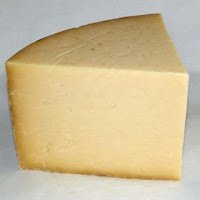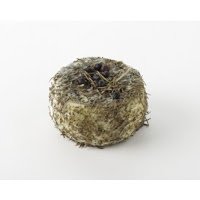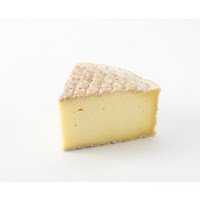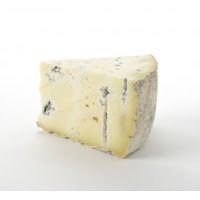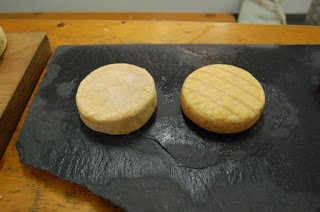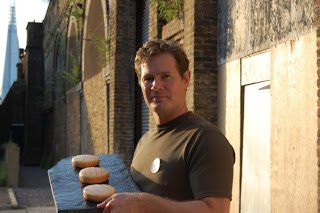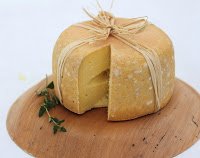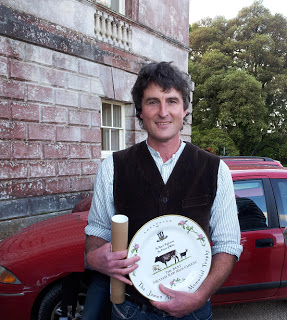The seaside seemed like
an obvious theme for the Brighton Food Society's most recent culinary
shindig, which saw us put on a five-course 'Beyond the Pier' meal for 40 people during the Brighton and Hove Food and Drink Festival.
It meant we could plunder Sussex waters for fish and seafood and take
inspiration from the junk food served on Brighton pier. It also gave
us the chance to mess about with inflatable dolphins and our own
crazy golf course as we took over the Brighthelm Centre for the
evening.
The only tricky bit was
coming up with a coastal cheeseboard, but with a bit of help from
Paxton & Whitfield, we managed to put together a pretty decent
selection.
Here's what we went for:
Cow's milk,
unpasteurised, trad rennet
During the summer the
Reade family's cows graze on peaty pastures close to the sea on the
beautifully rugged Isle of Mull, which helps lend the cheese a salty
tang. The cheese we had on the night was quite pale in colour and had
a strong fruity, almost fermented flavour, which suggests it might
actually have been made with winter milk. This is when the cows are
brought inside and fed on a diet of silage and spent grain husks -
called draff - from the whisky distillery at Tobermory, which lends
the cheese a yeasty sharpness.
Fleur de Maquis
Ewe's milk,
pasteurised, trad rennet
Another island cheese,
made with ewe's milk in the Bastia region of Corsica and coated in
dried herbs, juniper berries and sweet bird's chillies, which the
sheep feed on as they wander the rugged terrain. It's a semi-soft
sweet and nutty cheese with quite intense aromatic and spicy flavours
from the herbs.
Cow's milk,
pasteurised, trad rennet
This washed rind cheese
is made on a 250 acre coastal farm in West Cork with the Atlantic
Ocean bordering one boundary and Mount Gabriel to the North,
sheltering the pasture where Gubbeen's herd of cows graze during the
summer. Made by Tom and Giana Ferguson, Gubbeen is a very mellow
washed rind cheese Gubbeen, which has nice fresh dairy flavours and
smooth texture. Paxton and Whitfield reckon it could almost be
described as an Irish Reblochon.
Cow's milk, pasteurised, vegetarian
Finding a coastal blue
proved to be a bit tricky, so we ended up plumping for this buttery
delicate blue, which is made in Upton Cross, near Liskeard, about
10-15 miles from the coast. The high rainfall, mild climate and
relatively high humidity provide a nice environment for maturing
blue. Philip and Carol Stansfield mature Cornish blue for 12-14 weeks
and in 2010 it was named Supreme Champion at the World Cheese Awards.
Chatting to guests
afterwards, the Isle of Mull and the Fleur de Maquis seemed to be
most people's favourites. I definitely, thought the Isle of Mull was the stand out of the night. Really intense and complex with an almost alcoholic kick to it.

